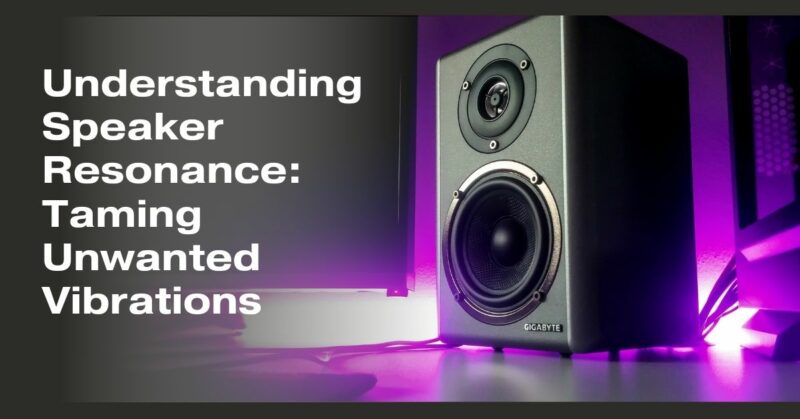When it comes to achieving optimal sound quality from your speakers, understanding and managing speaker resonance is crucial. Resonance can both enhance and detract from your audio experience. In this article, we’ll explore what speaker resonance is, how it can impact your sound, and techniques to manage and tame unwanted vibrations.
What is Speaker Resonance?
Speaker resonance refers to the tendency of a speaker’s various components, including the enclosure, diaphragm, and drivers, to vibrate sympathetically at certain frequencies when exposed to sound waves. This phenomenon can result in both audible and tactile effects.
Impact of Speaker Resonance on Sound Quality
Uncontrolled speaker resonance can have several adverse effects on sound quality:
- Distortion: Resonance can introduce unwanted distortions into the audio signal, causing a loss of clarity and fidelity.
- Muddy Bass: Resonance in the speaker enclosure can result in “boomy” or “muddy” bass, where low frequencies are poorly defined and lack precision.
- Coloration: Vibrations within the speaker can color the sound, altering its tonal characteristics and deviating from the original recording.
- Reduced Efficiency: Resonance can cause energy loss, reducing the efficiency of the speaker and requiring more power to achieve the same volume.
Managing Speaker Resonance
To tame unwanted speaker resonance and achieve cleaner and more accurate sound, consider the following strategies:
- Damping Materials: The strategic use of damping materials within the speaker enclosure can absorb vibrations and reduce resonance. Materials like polyfill, foam, or specialized acoustic damping materials can be placed inside the enclosure.
- Bracing: Reinforcing the speaker enclosure with internal bracing can help minimize panel resonances. Well-designed bracing can distribute vibrations more evenly throughout the enclosure.
- Thick and Inert Enclosures: Building speaker enclosures from thicker and more inert materials, such as MDF (medium-density fiberboard) or plywood, can reduce enclosure resonance. Additionally, minimizing joints and seams can enhance rigidity.
- Internal Decoupling: Isolating the internal components of the speaker, such as drivers and crossovers, from the enclosure can prevent vibrations from transferring between components.
- Anti-Resonance Feet: Placing your speakers on anti-resonance feet or spikes can help decouple them from the floor, reducing the transmission of vibrations.
- Crossover Design: Well-designed crossovers can ensure that each driver operates within its ideal frequency range, reducing the potential for resonance.
- Positioning: Experiment with speaker placement within your room. Sometimes, repositioning speakers away from walls or corners can minimize room-induced resonances.
- Acoustic Treatment: Adding room acoustic treatments like bass traps and diffusers can help mitigate resonance issues within your listening environment.
Listening and Fine-Tuning
Ultimately, the impact of speaker resonance on your audio experience may vary depending on the specific speakers, room acoustics, and personal preferences. It’s essential to trust your ears and conduct listening tests when implementing resonance control measures. Fine-tuning your speaker setup can help you strike the right balance between eliminating unwanted resonances and preserving the natural characteristics of your audio.
In conclusion, understanding and managing speaker resonance is essential for achieving optimal sound quality from your audio system. By implementing strategies to control and minimize unwanted vibrations, you can enjoy cleaner, more accurate sound that faithfully reproduces your favorite music and audio content.

